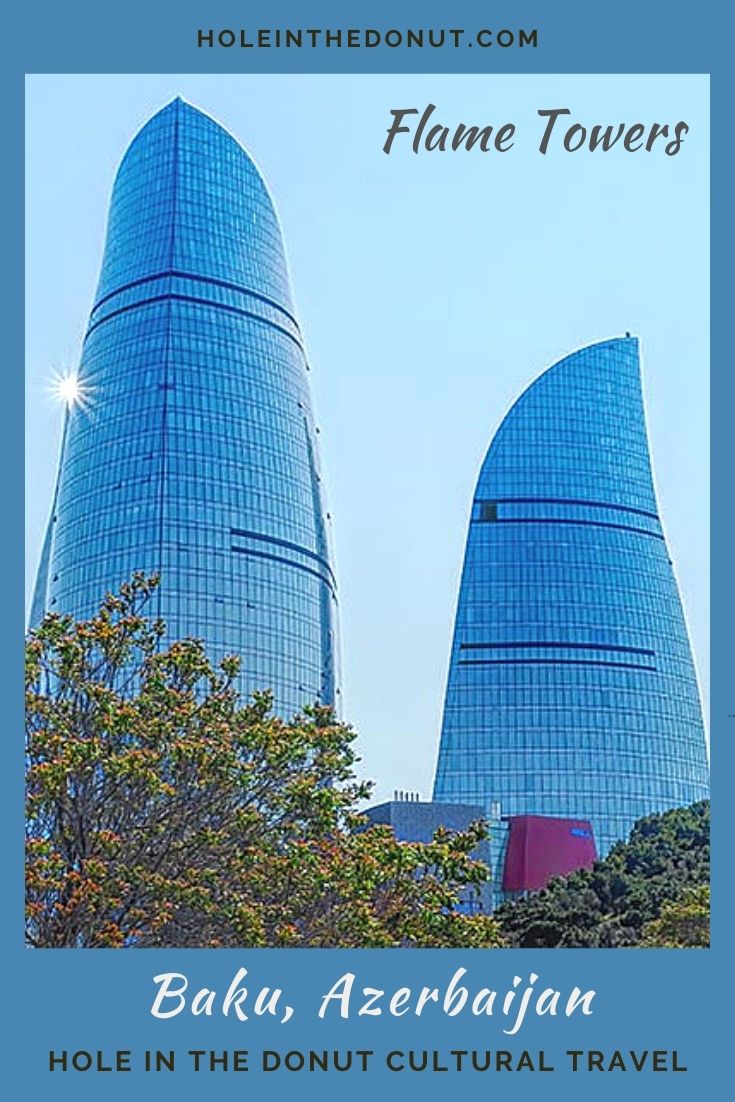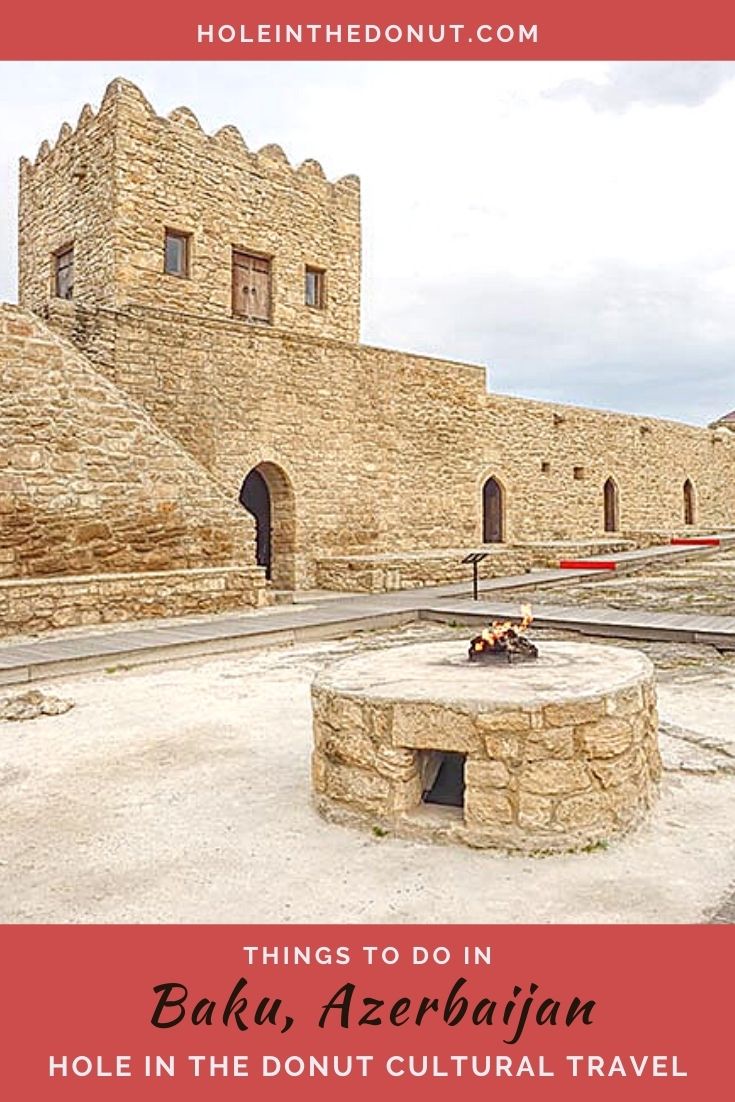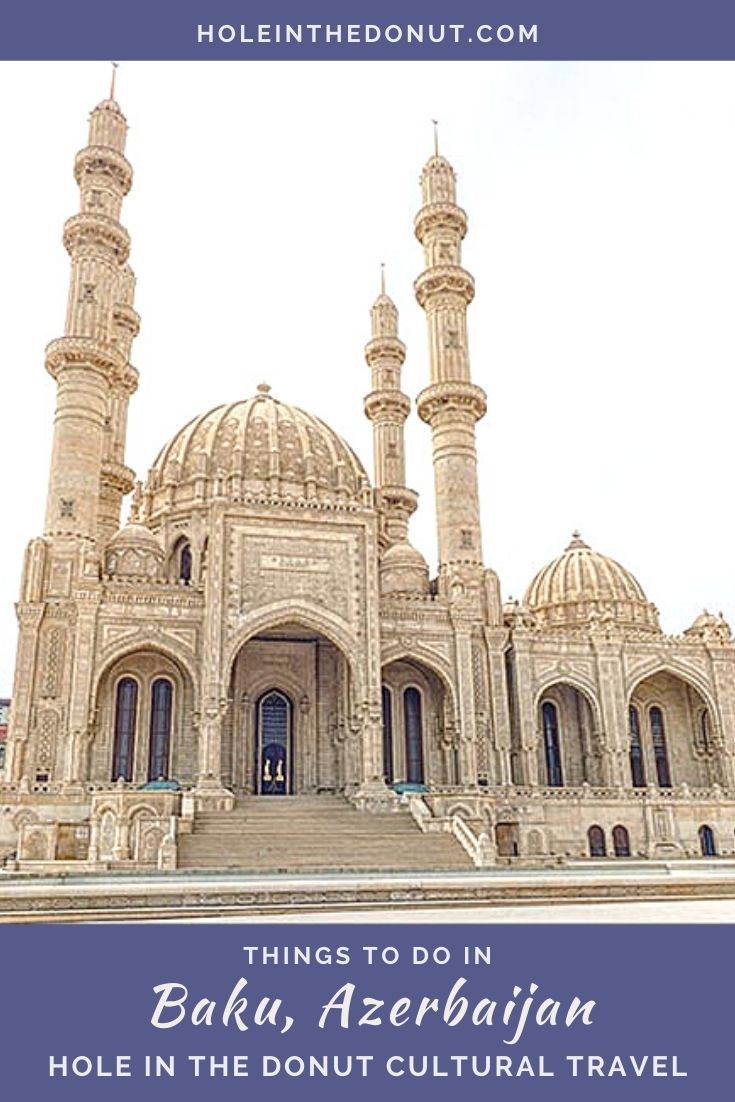From the moment I set foot in Baku, I knew there was something very different about Azerbaijan’s capital city. Mirror-clad skyscrapers and modern shopping centers stood juxtaposed against the 700-year old stone walls of the Old City. Elegantly dressed women in high heels negotiated crazy patchwork stone streets. Delicious cooking smells mingled with an unpleasant smell that I couldn’t quite identify. This contrast of ancient and modern, coupled with the unexpected friendliness of Azeris and that strange odor, would become my enduring impressions of Baku.
The Parallel Hotel, which had opened just two months earlier, was my next surprise. My room was huge, with an enormous King-size bed, and the staff was incredibly attentive. While having lunch at their in-house restaurant, the hotel manager, restaurant manager, waitress, and even the chef came out to talk to me. We discussed the history of Azerbaijan, the Russian occupation in 1918, religion, the current political situation – even the language and alphabet. By the time I’d finished eating, my itinerary for the following day was all arranged. For the very reasonable price of $70, the hotel had arranged a private tour with a driver and guide, to the most important sites in and around Baku.
We set out early the next morning. The city soon gave way to a bizarre barren landscape dotted with mud volcanoes. These mounds, which can rise more than 2,000 feet high, are formed when hot water deep below the Earth’s surface mixes with mud and methane gas. Subterranean pressure forces the resultant mud slurry up to the surface, where it “erupts” like a lava volcano.
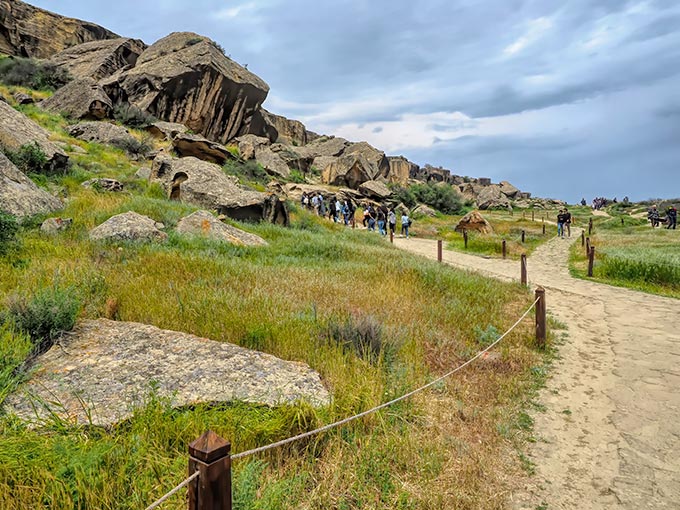
Beyond the mud volcanoes lay Gobustan National Park. This Unesco World Heritage Site contains more than 6,000 ancient petroglyphs that date from 5,000 to 20,000 years old. Produced by Neanderthal and Homo Sapiens cave dwellers, they depict scenes of antelope, wild bulls, hunting parties, dancers, warriors, and even astrological representations of the sun and stars. Remarkably, visitors are allowed within arm’s reach of the carvings.


Mesmerized, I emerged from one of the clifftop living enclosures and and gazed out over the Caspian Sea. Even when the only available tools were stone chisels, the drive to document life was too strong to be denied. I was still marveling over the carvings when I caught a hint of that same strange odor that had hung in the air the day before. I wrinkled my nose and sniffed, but it wasn’t a smell I recognized.

After a brief stop at Heydar Mosque to allow my driver to pray, we stopped at Ateshgah Restaurant, which features the national cuisine of Azerbaijan. Though a little dowdy on the outside, my guide and driver assured me that the food was outstanding.

The boys put their heads together and whispered conspiratorially. They decided I needed to sample every last vegetarian dish on the menu! Plate after plate began arriving at our table. An eggplant omelette, an omelette made with greens, chapatti-like rounds stuffed with a spinach and cilantro mix, and a delicious chopped salad. Then they ordered spicy roasted peppers, followed by white cherries in syrup and spiced tea. My initial delight turned to worry. I was footing the bill for our lunch and I could see the money ticking up. In the end I had a good laugh. All that food was only $18 for the three of us.
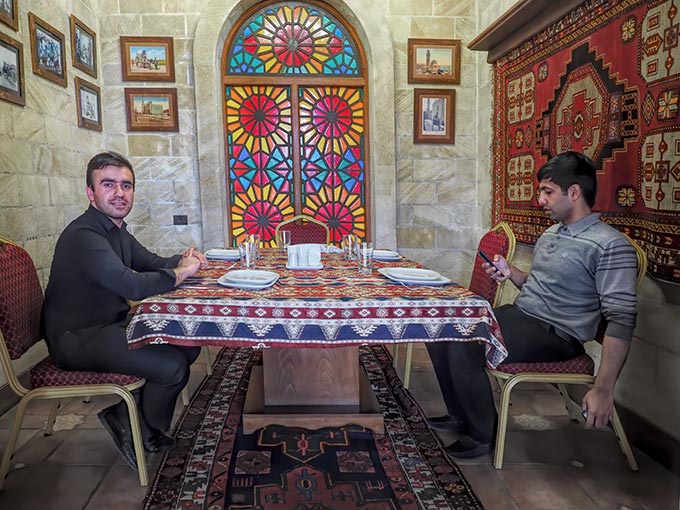
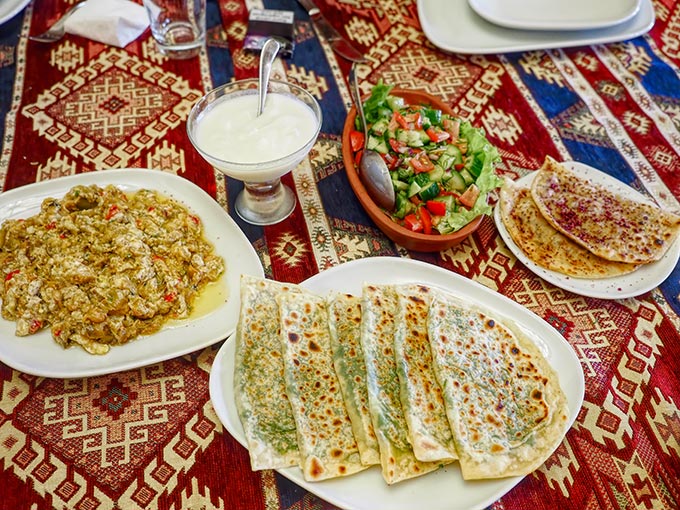


Sated, we waddled across the parking lot to the Ateshgah of Baku, an historic site that was considered holy by Hindus and Zoroastrians alike. Often called the Fire Temple of Baku, the complex is named for eternal flames that once welled up out of the ground. Today the flames still burn, but they are fueled by natural gas piped in from Baku. The natural eternal flame went out in 1969, following nearly a century of exploitation of oil and gas deposits in the area.
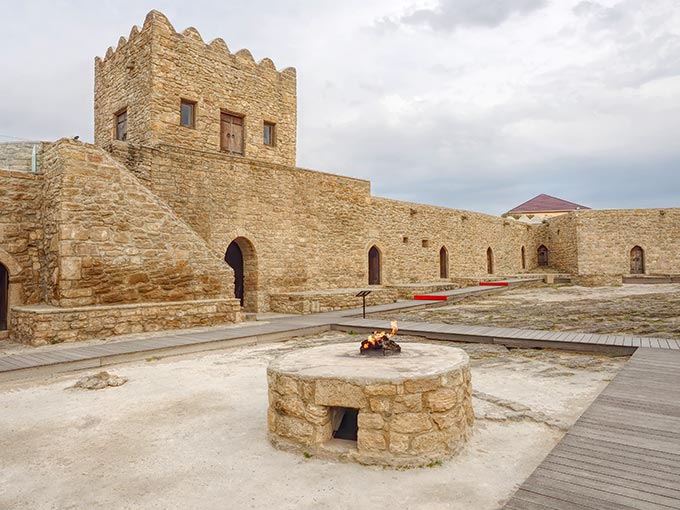

Dusk was falling and I was shivering in the dropping temperature, so we decided to call it a day. As we exited the Ateshgah, evidence of that exploitation was clear. In every direction, as far as I could see, hundreds, maybe thousands of pumps were bobbing up an down, pumping oil out of the ground. I wasn’t surprised to later learn that Azerbaijan is one of the most important spots in the world for oil exploration and development.
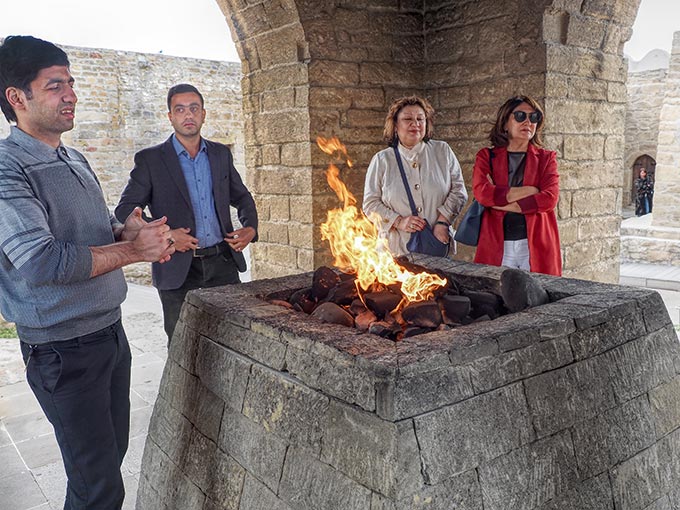
Sufficiently armed with information about the culture and history of Azerbaijan, I spent the next few days discovering Baku on foot. The Azerbaijani capital is a pretty city, dotted with parks and gardens. My favorite was Winter Park, a long strip of parkway filled with flowering plants, benches, and fountains. Ornate buildings with domes, stately hotels, and modern skyscrapers rise on either side, and a brilliant sun made everything sparkle. Families pushed babies in carriages, lovers strolled hand-in-hand, and toddlers struggled to balance on scooters. Everyone seemed to be smiling.
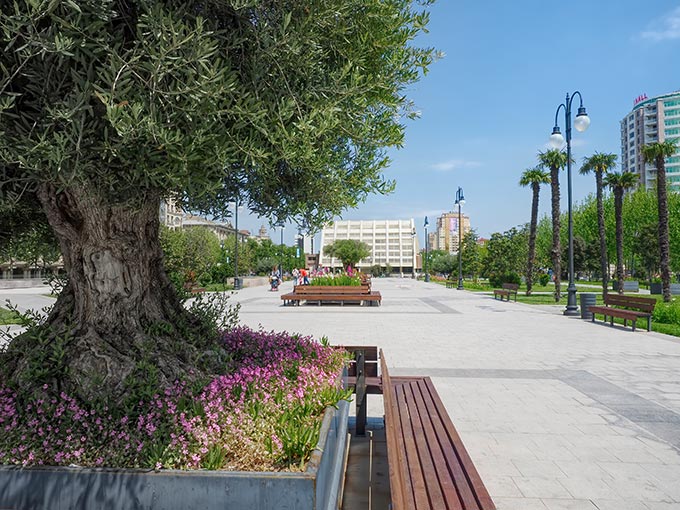
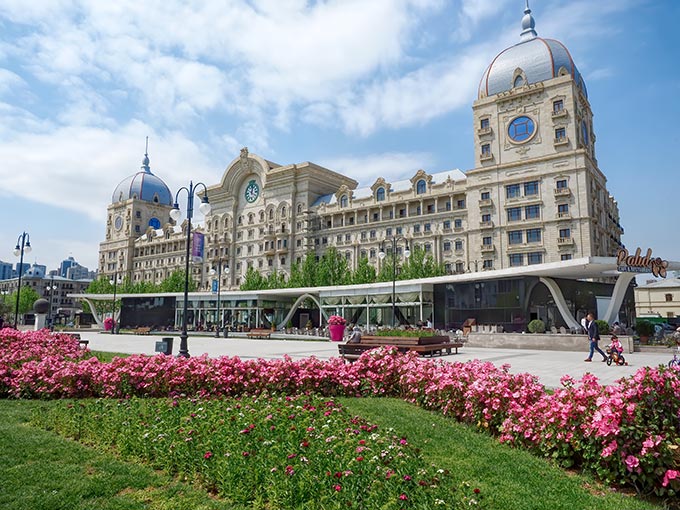
I finally turned back for the hotel, choosing a different route that took me into the back neighborhoods. Here there were no glittering buildings. Covered walkways led to dingy interior courtyards. Kids swung on crazily canted wooden door frames. An older man with a two-day stubble sat at a table with a younger man, playing a board game. Proudly dressed in a sweater vest and coat jacket that had seen better days, he rolled the dice and gleefully moved his round black pieces around the board. A murmur of appreciation rose from the men who stood watching.
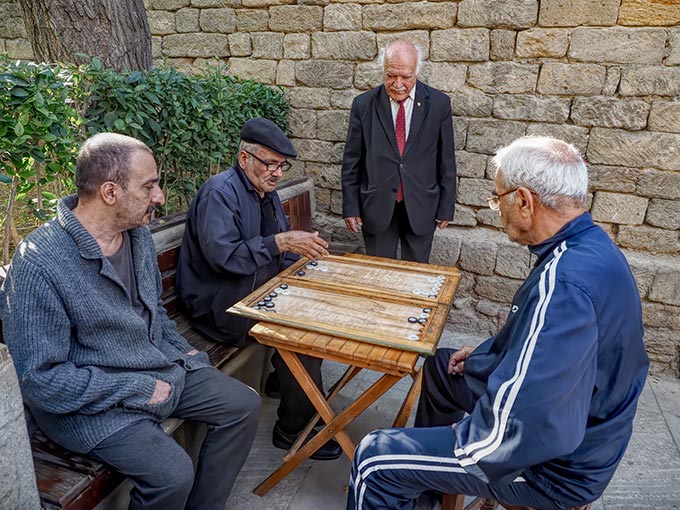
Suddenly they noticed me. All eyes turned in my direction. I grinned and waved. The old man flashed a smile back at me. “Backgammon?” I asked. “Nard!” he replied. I later learned that this ancient game, which has roots in Middle Persia, is similar to backgammon. It uses the same board but has different initial positions and rules. Leaving them to continue their game undisturbed, I plodded uphill another eight blocks until I finally reached the hotel. I checked my phone to see how far I’d walked – six miles! Exhausted, I fell into bed at 8 p.m. without even taking a shower.
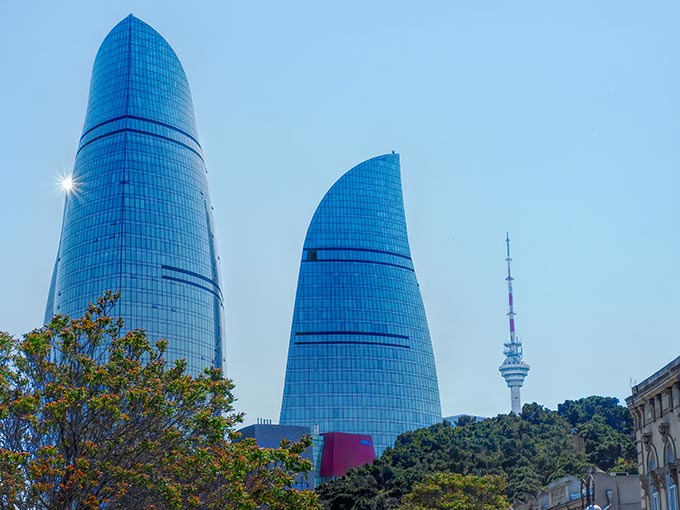
My eyes popped open at 6 a.m. Refreshed, I scarfed down a quick breakfast before heading out for another day of walking. A the top of my list was seeing Baku’s famous Flame Towers, which are built to resemble three blue flames. My chosen route along Abdullah Shaig Street was not particularly enjoyable. The street is a major thoroughfare with multiple lanes of very fast traffic. At several places the sidewalk disappeared and I found myself crossing in somewhat dangerous places. Plus, I never did find a view that showed all three of the blue glass skyscrapers. I had to settle for a photo of two out of the three.
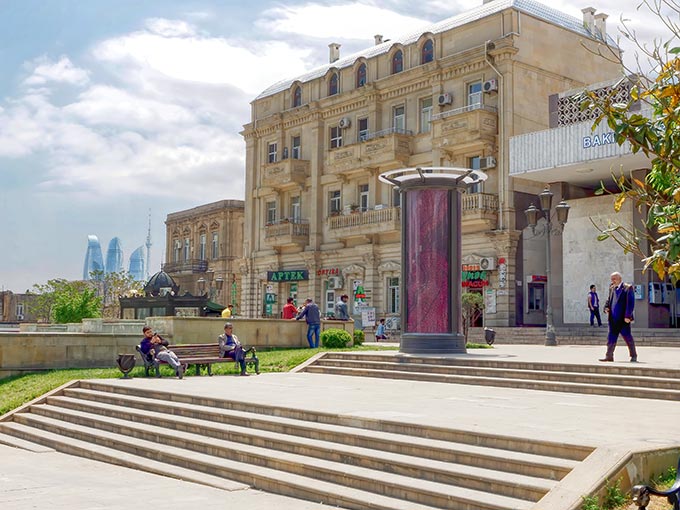

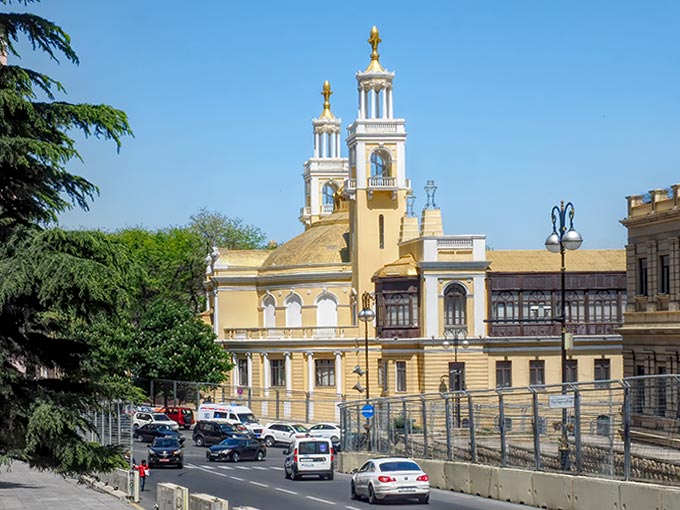
Pathways through Clock Park and lovely Salala Park took me past the National Cabinet Building; the President’s Residence; and the Azerbaijan State Philharmonic, with its lavish Italian Renaissance exterior. Soon, the walled Old City rose before me.
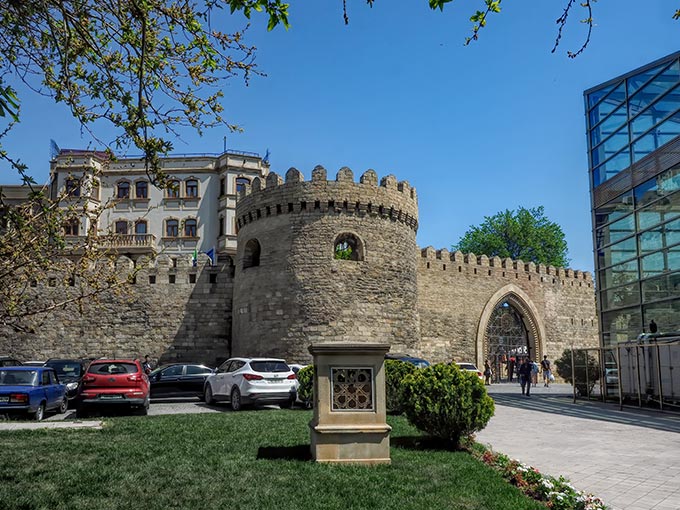
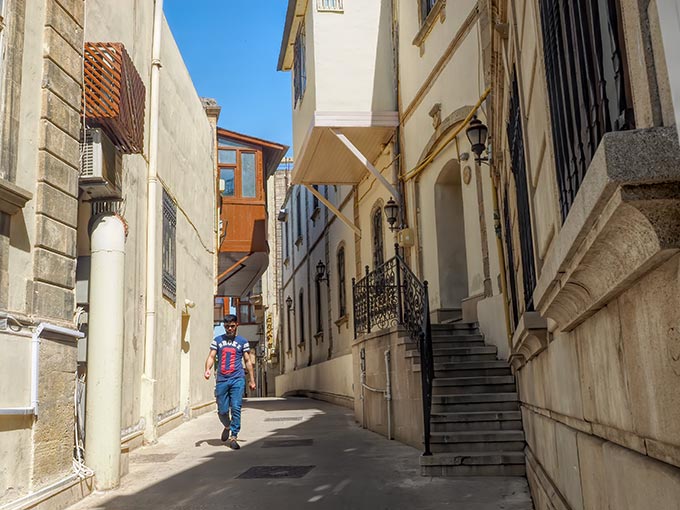
As I passed through a gate in the ancient fortifications, an English-speaking woman invited me into her sweet shop. I followed her down a dark cobblestone passageway leading into the belly of the fortifications. We emerged in a tiny shop filled with Azerbaijani specialties: loose green and black teas, dates, pastries, cookies, dried fruits. My mouth watered at the prospect. I couldn’t resist. I bought a package of dried apricots and a container of another candied yellow fruit for nine Manat (slightly more than $5). For the rest of the afternoon, I munched contentedly as I visited the King Palace, the Shirvansha’s Palace Complex, and the most notable structure within the Old City, the S-shaped Maiden Tower.
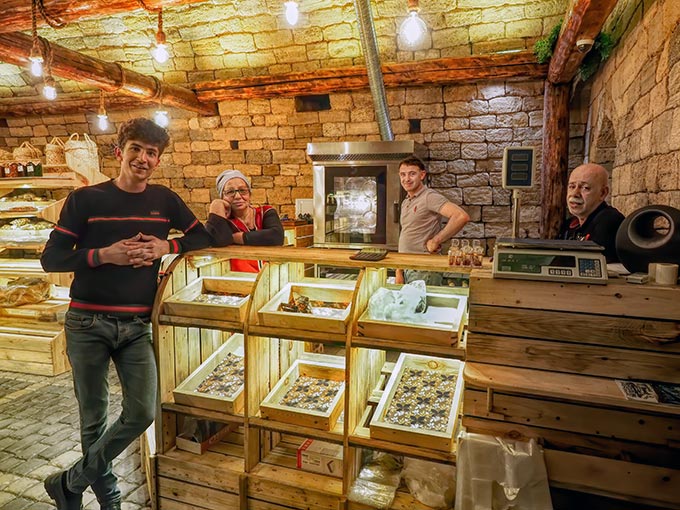

I finally ran out of steam and stopped to rest in a cafe. After a rejuvenating cuppa, I asked the shop owner where I could find a taxi. Once again, I was stunned by the friendliness of Azeris. The owner insisted I should use an Uber rather than a taxi. Not only did he order it for me, but one of the servers walked out to the street with me, waited for it to arrive, and made sure the driver knew where to take me.
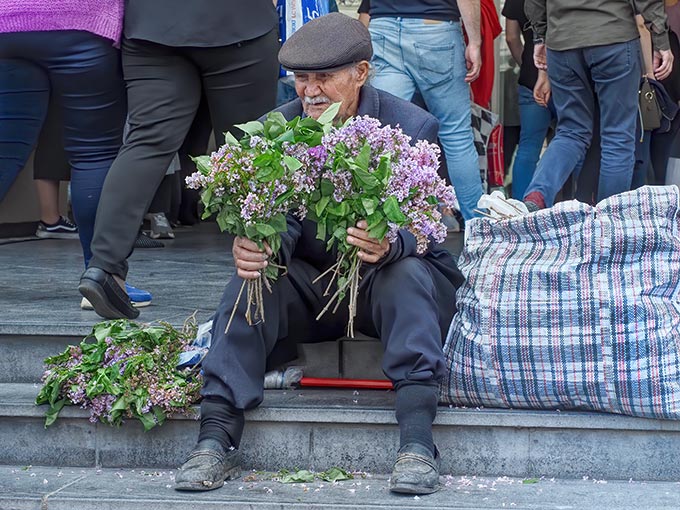
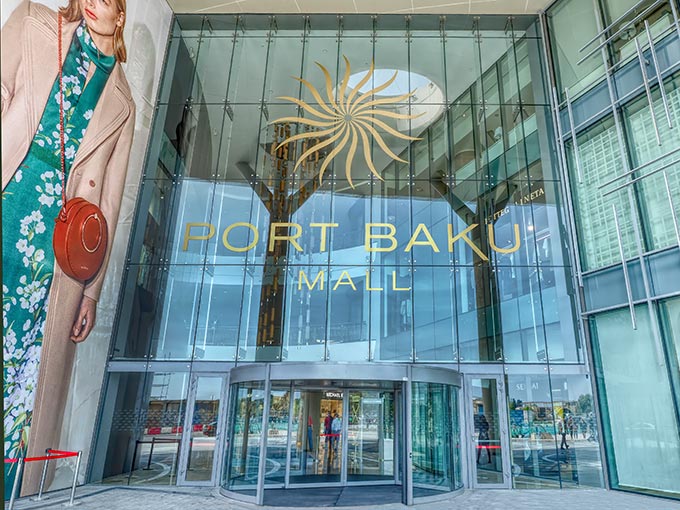
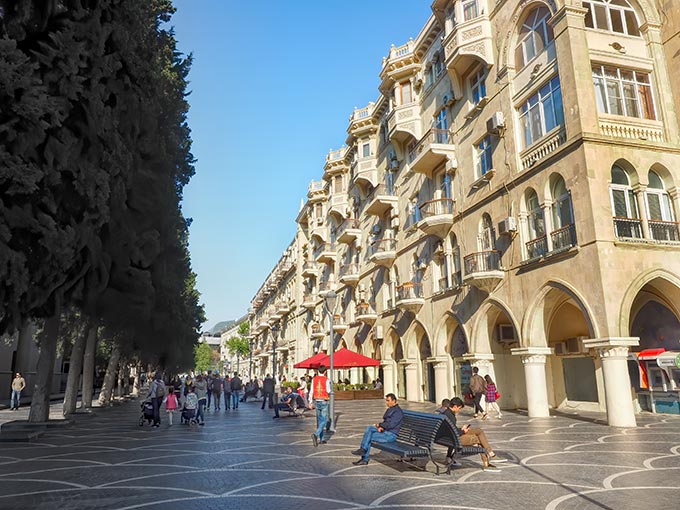
I was tempted to take it easy on my final day, but there were more things to do in Baku. I couldn’t leave without visiting Baku White City, a park with a dazzling white promenade that parallels the Caspian Sea. The moment I exited the taxi my nose went on high alert. That strange smell again. I looked down at the water. It was very dirty, with brown colored foam and oily slicks floating on top, and the boulders along the shore were all coated in a tarry black sludge. I finally realized that the odor I’d been struggling to identify was petroleum. But by then, I knew It was just the smell of money.
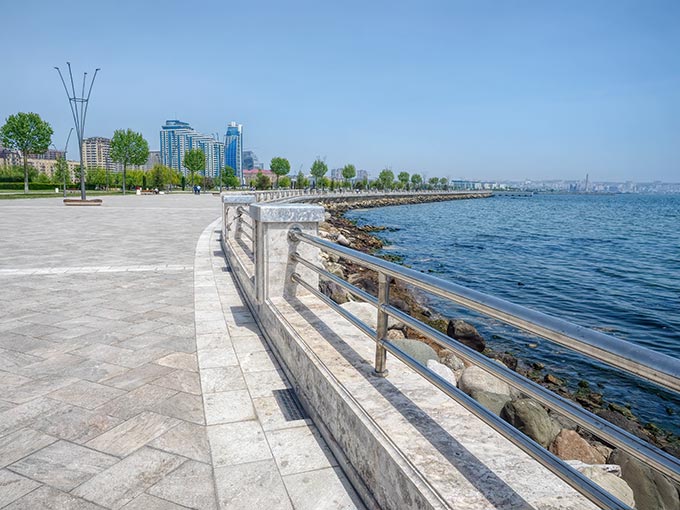
You may also enjoy:
The Many Lives of Istanbul’s Hagia Sophia
Mail Order Brides – The Shame of Ukraine
Kommunalka Living in St. Petersburg, Russia – Throwback to an Earlier Era
